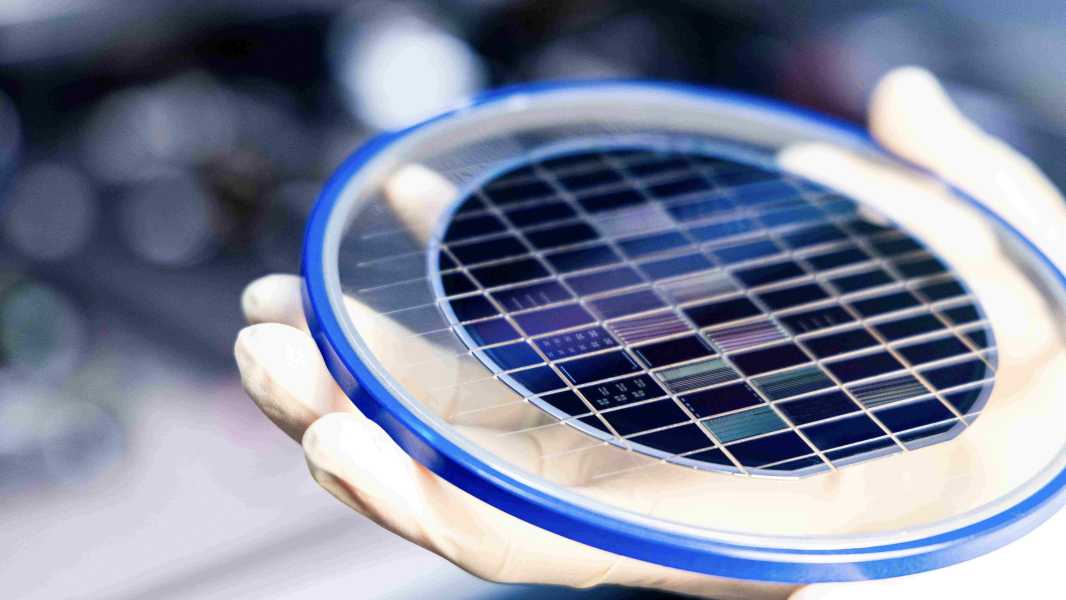
The Q.ANT wafer, made from thin-film lithium niobate, enables photonic integrated circuits with high optical modulation accuracy and speed, low noise and reduced heat generation. (Image credit: © Q.ANT)
A light-powered computer chip has been launched that is designed to manage artificial intelligence (AI)-based data centers and improve the resilience of high-performance computing (HPC).
In a press release published on February 24, quantum computing company Q.ANT said its photonic AI chip can deliver 30 times greater energy efficiency and 50 times faster computing than traditional silicon chips.
Pilot production of the new chip is currently underway at IMS Chips in Stuttgart, Germany, where Q.ANT has invested €14 million ($15.1 million) to repurpose an existing semiconductor plant to produce its new light chip.
Because the chip is manufactured in a repurposed factory rather than a dedicated production line, the company believes it can significantly reduce the technology's time to market. The chip can also integrate with existing HPC servers, which could speed up adoption, Q.ANT said.
“By 2030, we plan to make our photonic processors a scalable and energy-efficient cornerstone of AI infrastructure,” said Michael Foertsch, CEO of Q.ANT.
Photonic computing
Photonic chips could help solve serious problems faced by existing processor technologies, especially as demand from artificial intelligence and other data- and resource-intensive computing applications grows.
Traditional silicon chips control electrical signals using tiny switches called transistors. In contrast, photonic chips process information using particles of light (photons), which have no mass and can travel much faster than the electrons in standard computer chips.
Photons do not generate heat in the same way as electrons, which carry an electric charge. Therefore, the use of photonic chips in applications such as AI, which require complex and energy-intensive computations, can overcome the limitations of classical silicon chip architecture, potentially significantly accelerating data processing and reducing their energy consumption.
“This comes at a critical time for the computing industry, as the exponential growth of AI and data-intensive applications could soon overwhelm current data center infrastructure,” said Jens Anders, a professor at the University of Stuttgart and CEO of IMS Chips. He added that the two companies are aiming to create a “scalable model for energy-efficient computing.”
The Q.ANT chip is made using thin-film lithium niobate (TFLN), a crystalline compound deposited on a substrate that is the basis of the company's photonic chip. TFLN has attracted increasing attention from photonics and quantum technology researchers due to its potential for next-generation computing. By applying an electric field to the material, it can be used to control the speed and phase of light waves, allowing optical signals to be modulated with high precision.
A pilot production line has been set up specifically to produce chips containing TFLN, and Q.ANT plans to produce 1,000 wafers per year.
“As AI and data-intensive applications push traditional semiconductor technologies to their limits, we need to rethink our approach to computing,” Foertsch said. “With this pilot line, we are accelerating time to market and laying the foundation for photonic processors to become standard coprocessors in high-performance computing.”
Sourse: www.livescience.com





